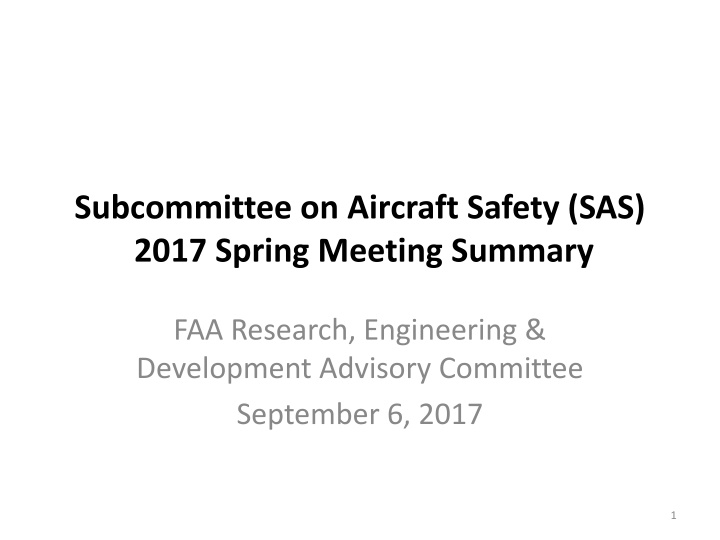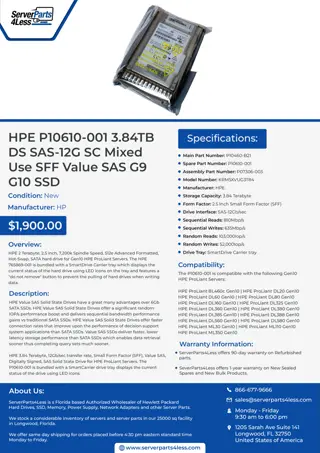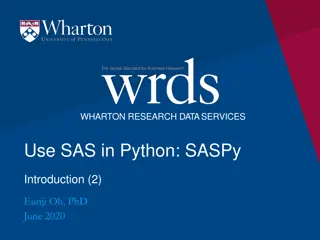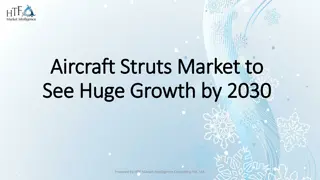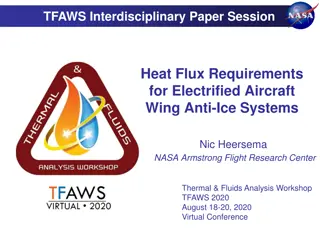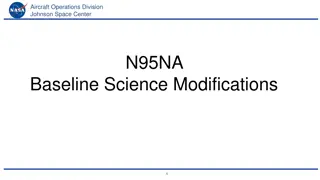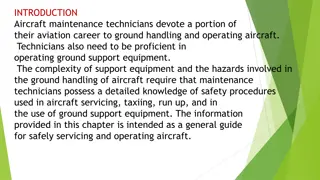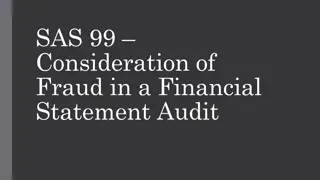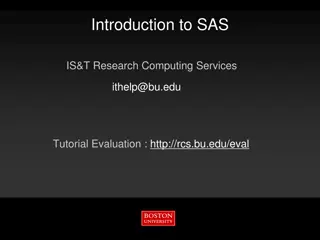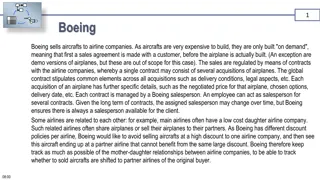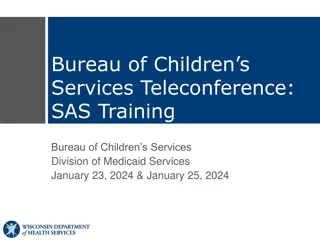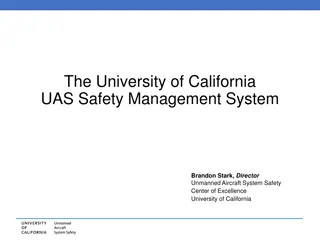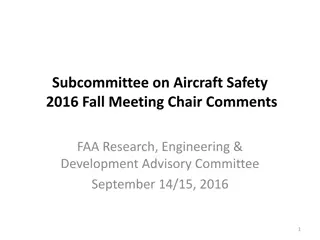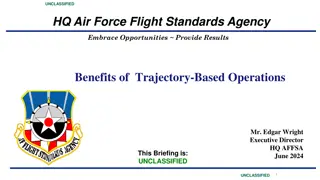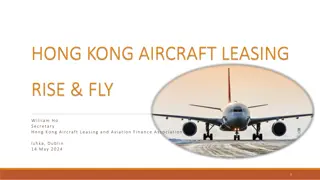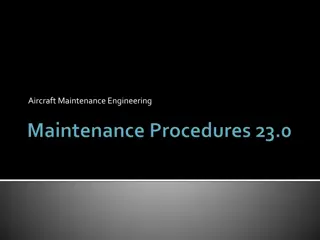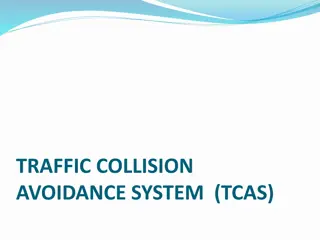Subcommittee on Aircraft Safety (SAS) 2017 Spring Meeting Summary
The summary highlights research findings and recommendations presented at the Spring 2017 SAS meeting, focusing on aircraft propulsion materials technologies, fatigue research, and UAS scope. Recommendations include achieving a balance in research areas, expanding research programs, and updating UAS implementation plans.
Uploaded on Mar 12, 2025 | 0 Views
Download Presentation

Please find below an Image/Link to download the presentation.
The content on the website is provided AS IS for your information and personal use only. It may not be sold, licensed, or shared on other websites without obtaining consent from the author.If you encounter any issues during the download, it is possible that the publisher has removed the file from their server.
You are allowed to download the files provided on this website for personal or commercial use, subject to the condition that they are used lawfully. All files are the property of their respective owners.
The content on the website is provided AS IS for your information and personal use only. It may not be sold, licensed, or shared on other websites without obtaining consent from the author.
E N D
Presentation Transcript
Subcommittee on Aircraft Safety (SAS) 2017 Spring Meeting Summary FAA Research, Engineering & Development Advisory Committee September 6, 2017 1
Reminder - Spring 2017 SAS Meeting Objectives Input on guidance to the research portfolio 2019 Continue to explore previously identified emerging issues and trends impacting needed safety research Consider guidance for the 2020 AVS Research Strategic Guidance Document Learn about CAMI 2
Reminder - Findings and Recommendations Research in support of propulsion materials technologies Finding Majority of materials research spend is related to aircraft composite structure Engine manufacturers continue to push for improvements Propulsion materials research is being reduced Prior SAS recommendations in this area still considered important Hot corrosion materials Cold dwell fatigue Advanced inspection techniques Advanced computational methods for microstructure Recommendation Achieve a proper balance between aircraft and propulsion research 3
Reminder - Findings and Recommendations Fatigue Findings Appreciated deep dive into FAA s overall research program Impressed with some elements of program fatigue genomics, biomarkers Remain concerned about a lack of holistic approach. For example: Aeromedical ambulances Other commercial aviation General aviation No plan to analyze data from recent Fatigue rule (FRMP/FRMS) implementations Recommendations Expand research program to encompass all stakeholders Structured research program for FRMP/FRMS part 121 operations are the programs having the desired effect? 4
Reminder - Findings and Recommendations UAS Findings Still difficult to get a complete picture on total UAS research scope Several smaller items presented in plan seemed unnecessary given scope of other known research Overwhelming majority of UAS research is COE grants Recommendations Complete, update and make routinely available the UAS Implementation Plan Make available the information regarding research conducted by ASSURE 5
Reminder - General Comments SAS utilized a new Research Program Area Review process intended to give higher-level visibility to current and planned research along with broader financial picture Committee considered this a success Enhanced meeting discussion greatly 6
Reminder - General Comments Cont 2020 AVS Strategic Guidance SAS Emerging Issues included in 2019 Strategic Guidance Document published by AVS in May, 2016. SAS desires the same in the 2020 document and has made suggestions to language Great discussion around the FAA s effort to improve the National Aviation Research Plan. Headed in the right direction SAS considered the role of General Aviation safety and the impact of the convergence of distributed electric propulsion and autonomy technologies. Will continue to watch this closely Critical National Resources .. 7
Full REDAC Meeting Briefing Full REDAC Meeting Briefing Full REDAC held May 31 in Washington, DC Administrator opened meeting with detailed comments regarding his priorities for research and development Noise (concentrated footprints, societal norms changing) Endorsing global CO2 emissions standards (gov t industry agreement) Unmanned aircraft research (UTM and collaboration) Growth and Complexity of aircraft manufacturing (Part 23 standards, template for oversight, connection to Ops SMS) Next Gen (trajectory Ops, UAS integration, Commercial Space) Data (safety focus and Caribbean region focus) 8
Full REDAC Meeting Briefing Also addressed future concerns that cannot be ignored What comes after jet engines? What technologies should we be thinking about How to bring it to fruition more quickly Cyber security NAS intrusions Increasing linkages to NAS, carrier ops and reservations systems Managing impact of intrusions Aviation Policy and Budget Flexibility Use of Data Collaboration with stakeholders Removing the bright lines between regulator and industry Shared responsibility 9
Full REDAC Meeting Briefing Comments on SAS Findings and recommendations Be more careful in wording our F&R s. Be sure to target the area of focus such as certification support Fatigue Effectiveness measures are a good idea Hard to justify additional research due to lack of data GA Safety Stay close to the issue of GA safety Possible areas of focus in the future Automation and Autonomy Hi Energy management issues 10
Full REDAC Meeting Briefing After all presentations and discussion the following meta issues were agreed Progress on NARP is positive Cyber Security Review the Cybersecurity strategic plan to be released in July Ensure committees are staffed with the right expertise Full discussion on plan at next full REDAC UAS Continue to monitor plan development How can we see the plan early enough to add real value? Benefits Analysis To assist in research prioritization, research in benefits analysis methodologies is required 11
Reminder - SAS Approach Desire to continue to build upon work of prior SAS meetings Keep previously identified Emerging and Future concerns in the forefront to assist in identifying research gaps Meeting the advisory needs of the AVS Management Team CSTA and outside industry/FAA expert participation whenever possible Deep Dives into significant items as defined by: Significant research dollars committed REDAC priority items Committee concern items (Emerging issues) Continue to improve the research review process 12
Agenda Development Guide Deep Dive into Cybersecurity (REDAC request) Cybersecurity Strategic Plan Update on UAS research (SAS and REDAC request) Integration and Research plan status Assure capabilities and results Keeping General Aviation Safety in focus (Emerging Issue and REDAC request) Continued improvement in Understanding Research Portfolio Big Picture (SAS Request) 2017 Research Portfolio accomplishments review and comments Support AVS requirements (SAS and AVS Request) Briefing on the AVS Certification reform Continued education on the capabilities of Tech Center Structure and materials Lab tour CASSIE Demo and tour 13
For Consideration During the Meeting Are SAS Emerging and Future issues still the right ones? Should they be changed or adjusted? What else do we need to evaluate/deep dive into to better inform us? Short term? Long term? 14
Appendix 15
Fall 2014 - SAS Emerging Issues Reminder Real time system-wide safety assurance Dependability of increasingly complex systems Certification of advanced materials and structural technologies High density energy storage, management, and use 16
Fall 2014 - SAS Future Opportunities- Reminder Commercial space integration with the National space system General aviation s role in safety systems development Effects of breakthrough medical technologies on FAA medical certification standards Identification and funding of strategic research and development 17
